How uncanny business instincts and hyper-curiosity set the Black Mamba up to build brands and make millions off the court.
At 17 years of age, Kobe Bryant was faced with his first big business decision: take his All-American acumen to the world of college hoops or bet it all on being the first high school guard to jump straight to the league.
The bi-lingual baller with a 1080 SAT score and interest from Coach K could’ve easily filled Grant Hill’s shoes at Duke, earning dual degrees in Durham and a network of private school peers.
Conversely, he could be crowned king at LaSalle. Staying local would’ve propelled his proud pops to head coach, aligning an inside track to secure Rip Hamilton, Tim Thomas, Jermaine O’Neal, and Shaheen Holloway as Philly’s Fab 5.
Both options were viable and proven. So they couldn’t be what was next. Always an innovator, Bryant bucked tradition and began a new one.
When Kobe entered the NBA Draft after his high school graduation, he was so young that his parents had to sign his first contract. It was rarified air for a guard at that time, yet his push of progression would define a billion-dollar industry for decades to come.
Such foresight was quintessential Kobe, a brilliant basketball player fearless enough to posterize 7-foot-centers and cold-call CEOs. On and off the court, the Black Mamba‘s drive and attention to detail made him a five-time champion and esteemed entrepreneur.
Boardroom spoke to Bryant’s peers and partners to hear how he thought, moved, and evolved as an innovator.
The Golden Child
By the time Kobe Bryant had started his senior year of high school, everyone from Dean Smith to Rick Pitino knew his name.
Sadly for those coaches, they knew too late. Oddly enough, they weren’t alone.
“Nobody — including all the guys in Philadelphia — knew who Kobe was,” Sonny Vaccaro told Boardroom. “Nobody invited him to anything. He had just come back from Italy.”
Arriving in America with an accent and no rep, an eighth-grade Kobe came home to Philly as the son of a local legend. His father, Joe “Jellybean” Bryant, had played in the NBA with Dr. J before flying overseas to keep his career alive.
Enrolling in a suburban school and far from the pages of SLAM or Street & Smith, Kobe acclimated to American life while Joe reached out to Sonny in hopes of getting Kobe into his famed ABCD Basketball Camp.

(Damian Strohmeyer / Sports Illustrated / Getty Images)
Back in 1972, Joe had won MVP of Vaccaro’s storied Dapper Dan Roundball Classic. In the time since, Vaccaro had gone on to play a pivotal role in inking Michael Jordan at Nike and launching Air Jordan. A bitter breakup with the brand led him to join his former colleagues, Peter Moore and Rob Strasser, at Adidas.
Vaccaro took his famed high school All-American camp with him to the Three Stripes, set on bringing the brand the next MJ. That golden child ended up being the uninvited son of Joe Bryant.
“We brought Kobe in very late,” Vaccaro said. “No shoe company at that time was looking at him because Kevin Garnett was the only one who had really done it out of high school.”
As an underclassman, Kobe wowed the entire camp. The only one unimpressed by his breakout performance was Kobe himself.
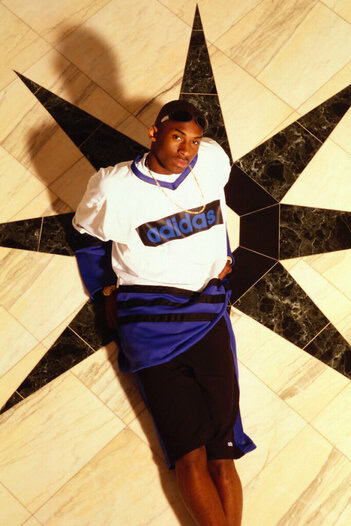
“He goes, ‘I want to thank you for having me at camp this year, Mr. Vaccarro. I’m really disappointed,'” Vaccaro recalled. “‘Next year I’m going to come back and be the best player in the whole camp.’ He was an unknown, none of these kids knew who he was.”
What he was, and would be, was the messiah for Adidas Basketball and the first guard to go pro out of high school.
“What he told me was a prophecy,” Vaccaro said. “It was very similar to the way Michael Jordan talked to me years before.”
By the summer of 1995, two things happened: the Minnesota Timberwolves took high school senior Kevin Garnett fifth overall in the NBA Draft and Kobe Bryant won MVP of ABCD Camp, as prophesied.
While college coaches came crawling after the gangly guard out of Philly, Sonny plotted patiently from his New York apartment, devising a plan to sign Kobe to Adidas and send him straight to the NBA.
“I started recruiting him silently, I never went to a high school game,” Vaccaro said. “I told Peter Moore, ‘This is money well spent, I’ve got the next Michael.'”
On TV, the world was starting to discover Kobe Bryant as he dazzled in the McDonald’s All-American Game and took Brandy to his senior prom. Behind the scenes, Adidas was devising a multi-year, multi-million-dollar deal that would make the 17-year-old phenom the face of their basketball brand.
It was an enticing business decision for all involved and also a massive risk. There was no guarantee an NBA GM would have the gumption to take a high school guard in the first round, if at all. Kobe could barely grow a goatee let alone be tasked with carrying a franchise and a sportswear juggernaut.
But Vaccaro had seen this same story play out before. He knew Kobe was his guy.
“He was the chosen one to be the first one to get Adidas back on the train,” Vaccaro said. “We were basically like Nike in ’84. The difference was Nike had pros in their stable and were a billion-dollar company because of college basketball. What I did was play out the same scene with a new kid.”
Covered in Converse, Air Jordan, and Nikes as a high school senior, Kobe announced his intentions to declare for the NBA Draft in 1996 with only those in the known understanding he had a million-dollar deal from Adidas.
It was brazen, bold, and unlike anything that had happened in high school hoops before. It was innovative and risky, but also a total long shot.
“If he didn’t come to camp I’d probably never see him,” Vaccaro said. “But I found my guy. It was a million-to-one shot.”
True Hollywood Story
In the summer of 1996, Kobe Bryant flew city to city, trying out for NBA teams in Adidas sneakers.
Though he’d been scrimmaging with stars on the Sixers since he was old enough to drive, the world at large still thought he was wild for making the leap straight to the league.
Everyone except Jerry West.
Impressing the Laker legend in a private workout, another masterful play was set.
Agent Arn Tellem used his leverage to scare potential pickers in the lottery to pass on Kobe, positioning him to land at No. 13 for the Charlotte Hornets to trade his rights to Los Angeles. The move made the Lakers eligible to fully enter the Shaquille O’Neal sweepstakes, signing the free agent for a whopping $115 million for seven seasons.
Conversely, Kobe’s rookie salary placed him at a total of $3.5 million for three years. Being in a major market placed him on billboards for Adidas, but on the back of the bench as a high schooler sent to a contender.
“He didn’t play immediately,” Vaccaro said. “He had that horrible rookie year with the Lakers. Everybody remembers the playoffs when he took the 99 shots. I asked him, ‘What the hell are you doing?’ He said, ‘No one else was taking the shots.’ It never phased him, he was that way forever.”
Despite doubters and inordinate expectations, Adidas doubled down on Kobe and gave him a signature sneaker in year two before he even became a starter.
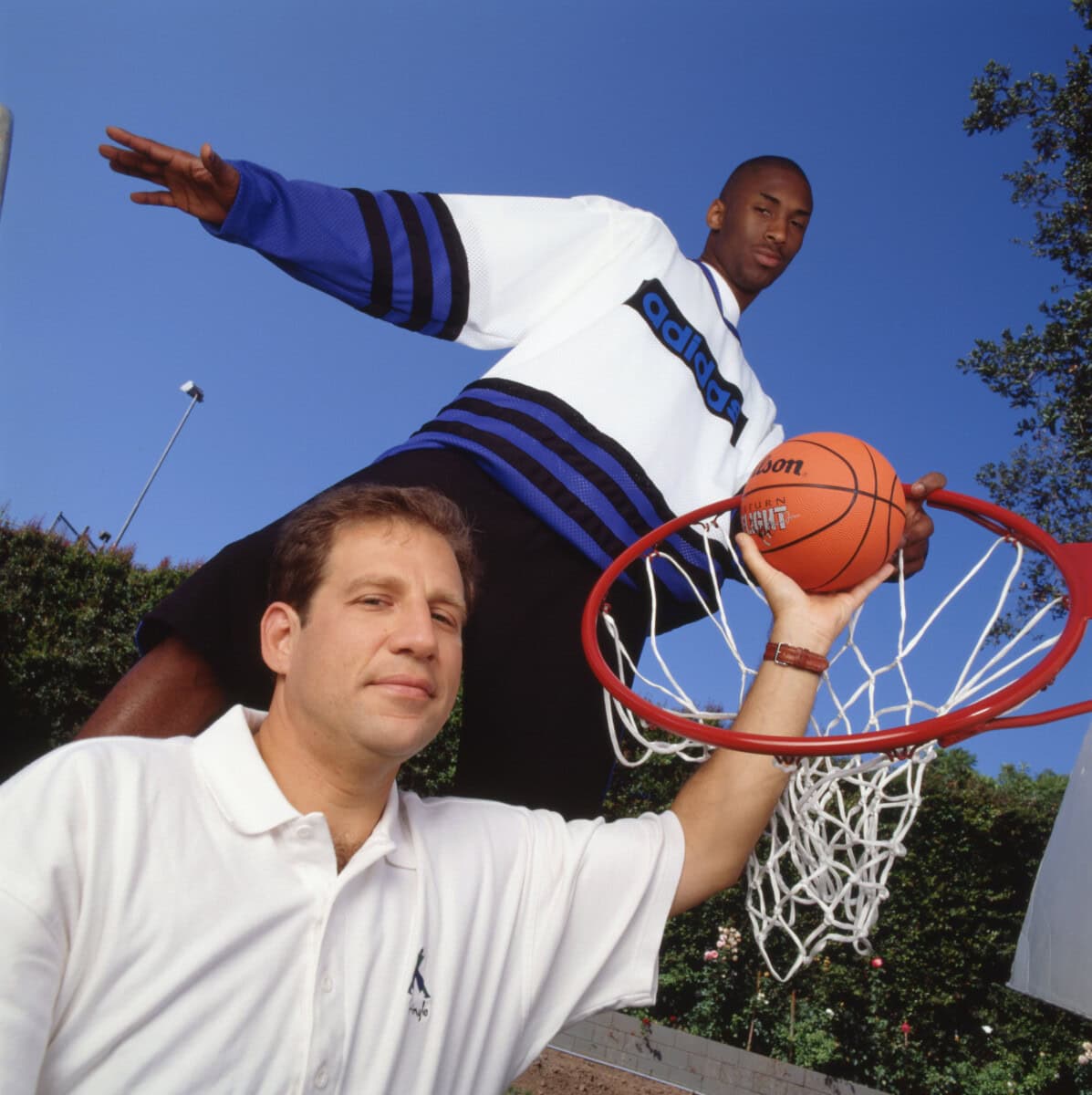
The same energy was felt by fans as he ascended, voted an All-Star starter that same year. Suddenly, Kobe was on the Madison Square Garden marquee right next to Michael Jordan. He was only 19.
By being bankable as a guard straight out of high school, Adidas quickly invested in the likes of Tracy McGrady, setting the stage for similar salary and ascent. By 2003, Nike and the NBA were on the same program as Adidas and Vaccaro, inking LeBron James for nearly $90 million with the Cleveland Cavaliers taking him first overall.
While Adidas benefitted from the Kobe effect, the Lakers were the biggest winners when it came to the brand ushering him into the NBA. Over the course of Kobe’s $56 million rookie extension, he helped his Hollywood squad win three straight championships.
It all set the stage for two separate stints of free agency that would forever shape Kobe’s career.
The Rebrand
Coming off his third straight title and fourth All-Star appearance, Kobe had something he didn’t have when he entered the NBA at 17: Leverage.
Looking to write his own story and carve his own path, he asked for a buy-out from his groundbreaking Adidas deal as he was upset with the way they were marketing him. After a year of footwear free agency, he signed a $40 million contract with competitor, Nike.
Calling it akin to Harry Potter arriving at Hogwarts, the storytelling mind of Kobe meshed marvelously with the innovation intel in Beaverton.
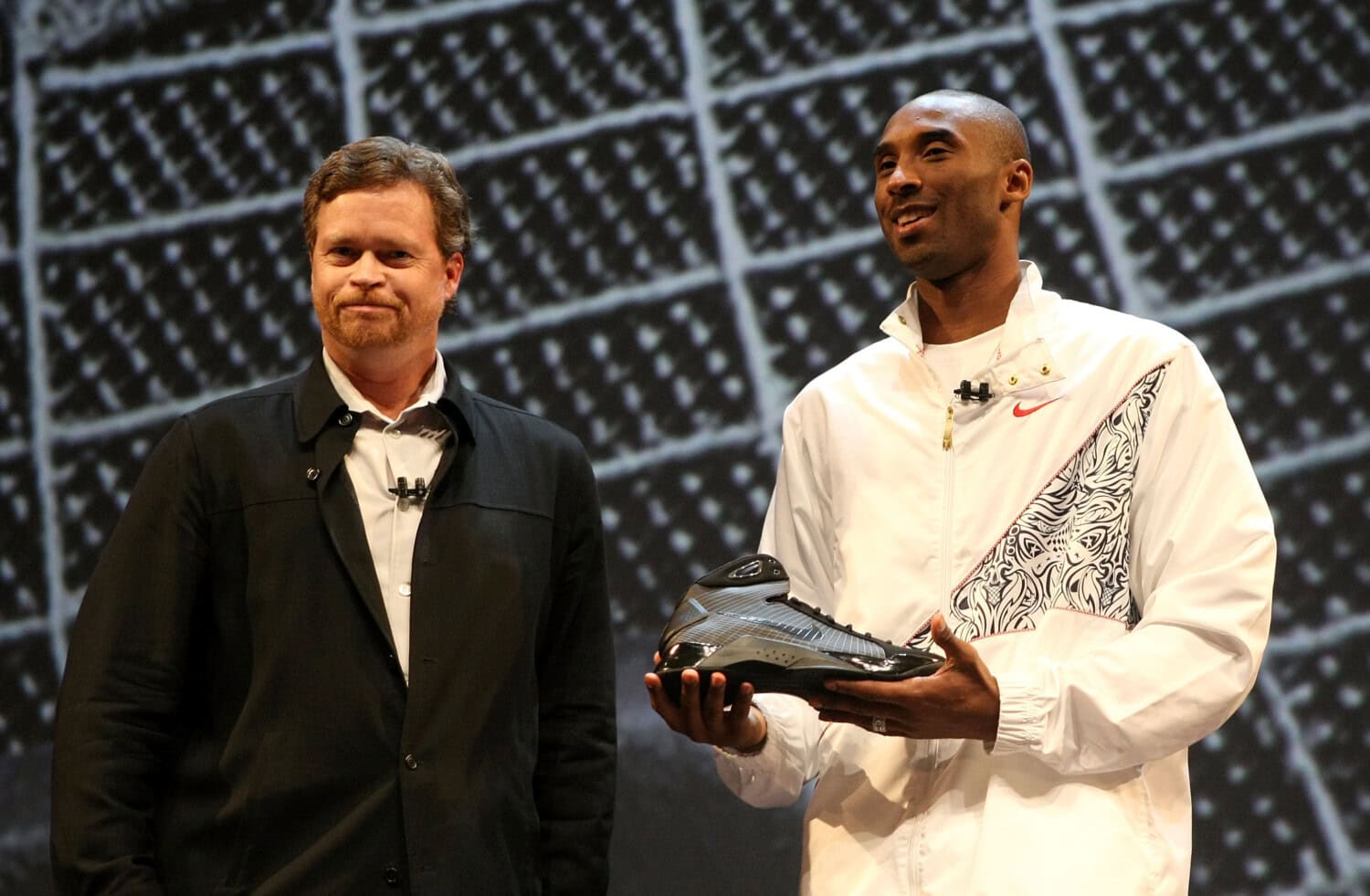
“Some of these projects that are more advanced in performance? There are only a few athletes that will go down that journey with us,” designer Tinker Hatfield told Boardroom in 2022. “Kobe was one and Michael was another.”
Rebranding his image from avant-garde child star to cold-blooded technician, Kobe and his brand at Nike became synonymous with innovation in the same way Apple products became adored during Steve Jobs’ run.
“Michael and Kobe? They’re the best,” Hatfield said. “They were willing to try things that had never been done before to pursue the very highest level of performance they could ever attain. Kobe was so inquisitive and interested in trying new things; Michael was the same way. Nike would not be the same without those two people.”
By earning equity at Nike right after MJ hung up his sneakers, Kobe carried the torch for pushing the envelope on their performance product. At the same time, he was seeking similar creative control in LA.
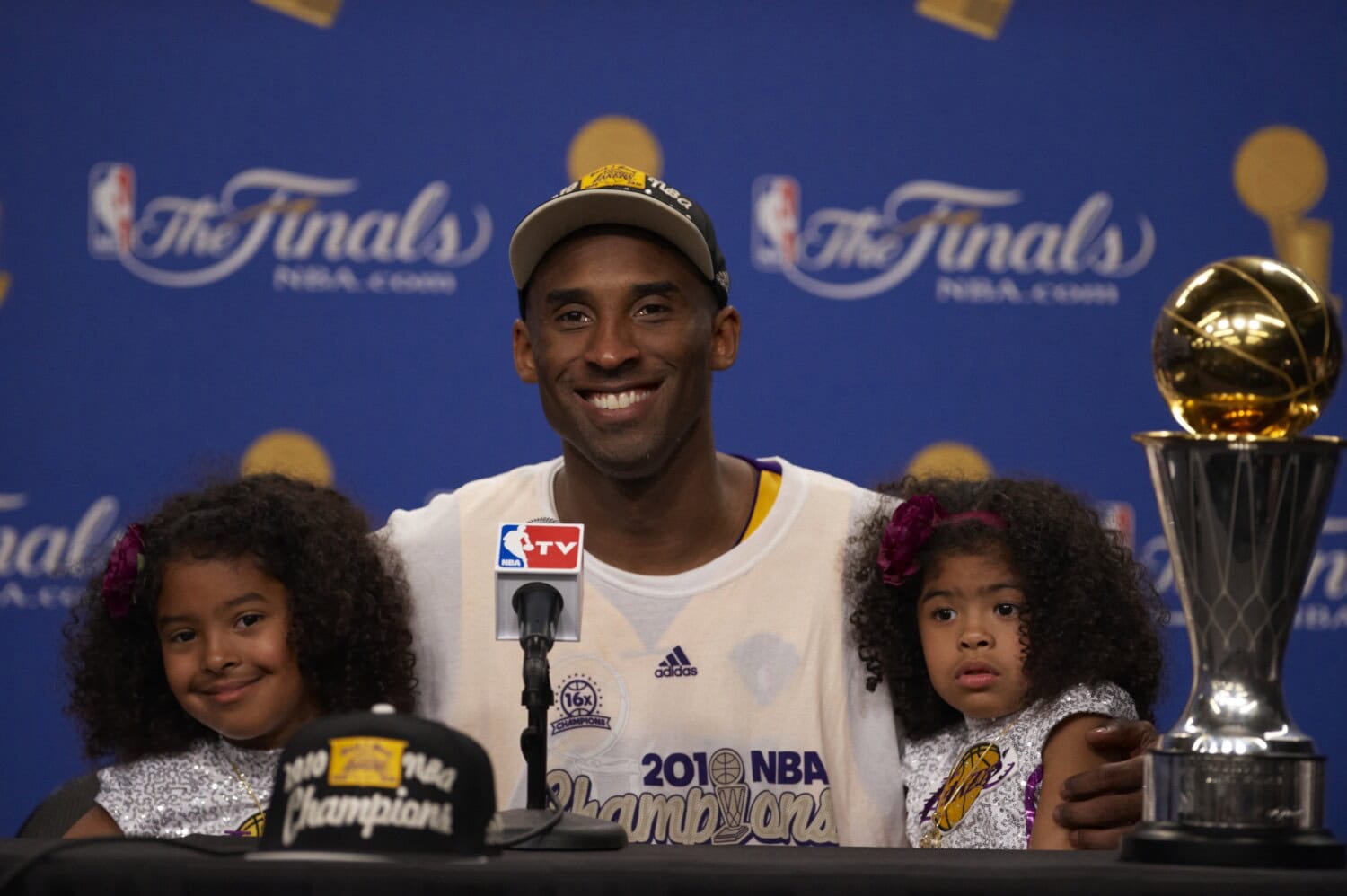
In the summer of 2004, the Lakers traded Shaq to the Miami Heat, handing the keys to Kobe. With those keys came a new contract: $136 million for seven seasons. During said stint, Kobe catapulted himself to the chosen son of Los Angeles and a top seller worldwide in jersey sales.
Over the course of that contract, he changed his number to 24, brought the Lakers back to the promised, led Team USA to Gold medal glory, and found a voice in front office manners. He became an example for his peers when it came to taking his craft as seriously as possible.
“I admired so much the work ethic, the dedication, the preparation into him being one of the best players of all time,” Hall of Famer Pau Gasol told Boardroom in 2021. “And probably the best player during a long period of time in the NBA.”
It was this element of dedication mixed with Kobe’s innate curiosity that kept him as an All-Star starter in three different decades but set him up for his second act as a brand builder.
Seeing Ahead
In the late 2000s, Kobe Bryant was at the top of his game.
Having an MVP, five titles, and one Olympic Gold medal to his name, ball was life. However, it was not the end all be all.
At the end of the said decade, Bryant began poking his head around his various business partners, acutely aware of what could be next once he hung it all up.
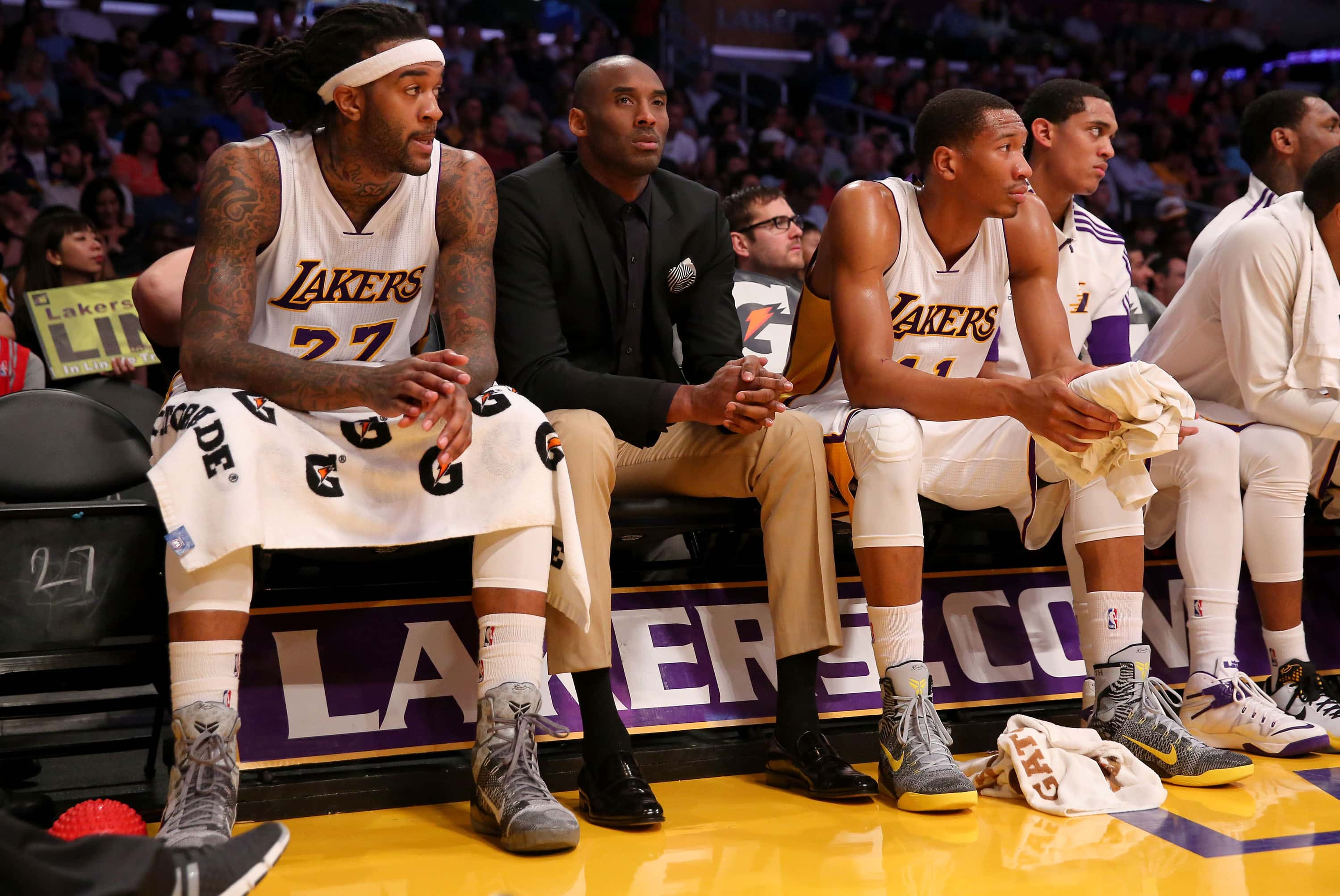
This inclination toward storytelling showed up at an infamous Nike commercial shoot where he proved less interested in the limelight and more enthralled by how the campaign was coming to life.
“Kobe was so curious,” former W+K Art Director Ricardo Viramontes told Boardroom in March. “Him and Amare were asking, ‘What cameras are those? How does this work? What is this? What is that?’ They were active in wanting to know what the process was.”
Quickly, learning the process became carrying out the process.
“Kobe was directing his own commercials and was really ahead of the game,” EVOLVE co-founder Stuart Duguid told Boardroom in 2022. “That’s kind of what everybody is doing now – even if it’s not commercials – but it all dates back to that concept.”
At the same time Kobe was acclimating his mind to marketing endeavors, he was rehabilitating a body burdened by decades of grueling training.
Dating back to his AAU days in Philly, Kobe was known to ice his knees after tournaments, always akin to the long game even while swimming in the fountain of youth. During the twilight of his pro career, he’d begin icing on the bench if it was already a blowout.
Said habits kept him in the NBA for 20 seasons. It also kept a plethora of people employed.
“My buddy was a low-level assistant at the University of Irvine,” Hyperice founder Anthony Katz told Boardroom. “He had to fill Kobe’s ice bags after every workout.”
Katz, then a high school history teacher playing pickup in LA, was working on a makeshift way to ice his own knees. The assistant at Irvine asked Kobe if he wanted to give the DIY device a try. Not only did Kobe say yes, but he immediately called Katz with feedback.
“He said, ‘Here’s the deal. I like it, but it’s not perfect. If you can get it to where it’s better I’ll wear that shit on the bench,'” Katz recalled. “It was that encounter that made me start the company. It gave me a reason to run with the idea.”
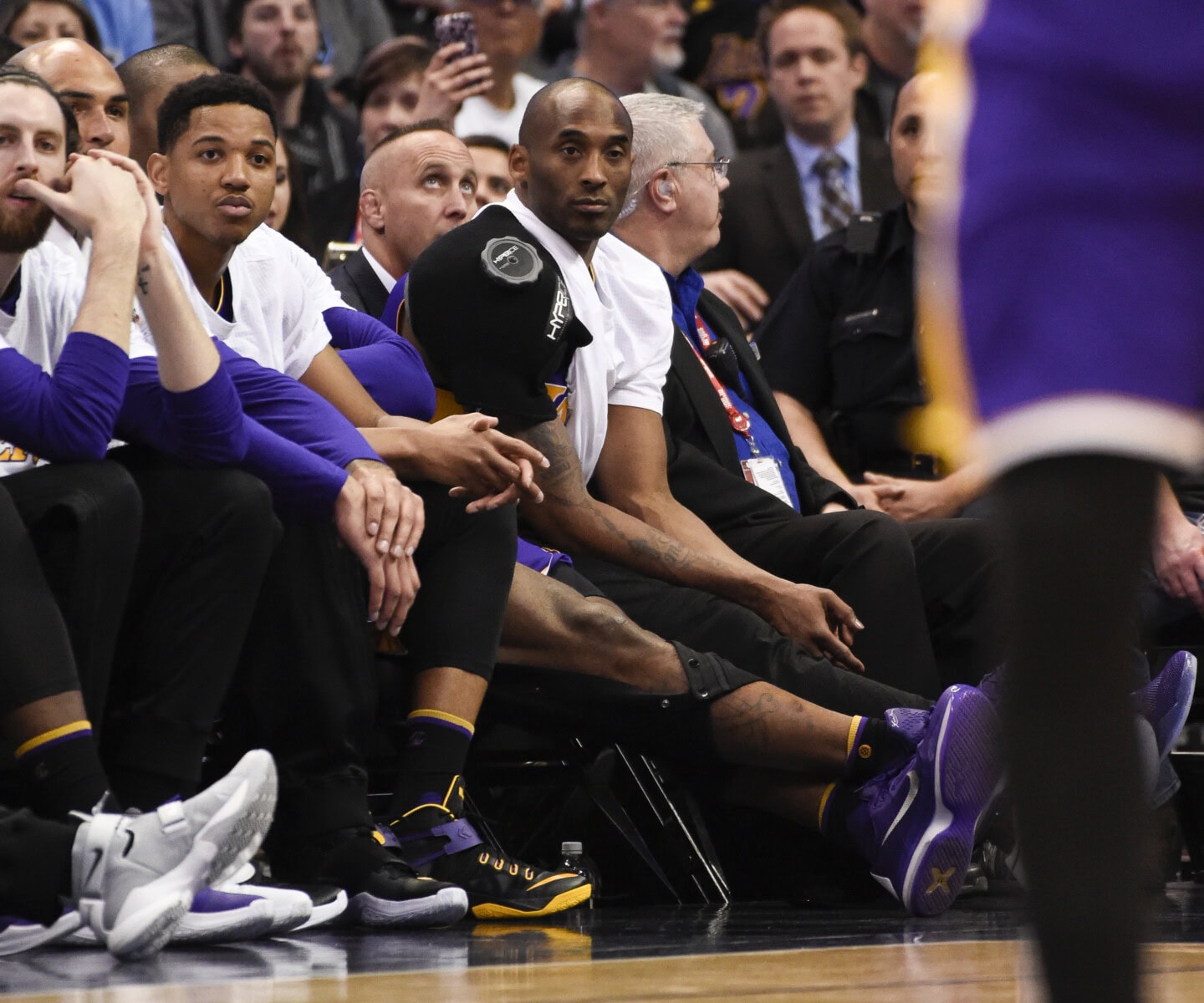
In a matter of years, Hyperice became a brand used in NBA and NFL training rooms across the country. Kobe began using their product on the sideline, leaning on Katz to further find recovery solutions as Nike remained focused on their central business model and opted against rolling out their own anti-inflammatory apparel and devices.
“Anyone who knows him will tell you that the dominant trait of his personality is curiosity,” said Katz. “What if I did this? How could I push this? How great could I be?”
Just as a brazen belief in what was next got him into the NBA and kept him at an All-Star level, the same forward-thinking approach would provide the foundation for life after hoops.
Mamba Out
At 37, Kobe Bryant played his last basketball game for the franchise that took a chance on him 20 years prior when he was too young to sign his first contract.
He scored 60 points.
While that storybook sendoff couldn’t have been written in a Hollywood script, his decision to drape himself in a BodyArmor towel immediately after the clock struck zero proved a marketing mind already hard at work.

Investing in the beverage company back in 2013, it was overt product placement that didn’t cost Kobe or the company a cent.
However, his interest in his investment was far more than a one-off stunt.
“The founder of BodyArmor told me that Kobe would call him at 2 AM about an idea for bottle packaging,” Duguid said. “Kobe was doing everything, he was super hands-on.”
Serving as one component of Kobe, Inc., the 10% share in BodyArmor was one of Bryant’s many passion projects that started in the twilight of his career and began to bear major fruit in his retirement.
From children’s books to body care products, Kobe, Inc. was off and running in Newport Beach. By buying office space for $5.8 million in 2014, the enterprise was not just Kobe’s name but also his vision.
“He was really operating the businesses,” Duguid said. “I was so overwhelmed that one athlete had this structure. I’d heard that he had a production company and investment arms, but the size and scale were amazing.”
All the while, Kobe remained diligent in coaching his daughter’s basketball team, actively mentoring athletes like Jayson Tatum and Naomi Osaka, and co-owning the Mamba Academy.
His efforts as a storyteller secured him an Oscar and an Emmy while his continued partnership with Nike birthed the Protro line.
As we all know, Kobe’s life and countless others were tragically taken in a helicopter crash in January 2020. While Bryant is no longer here in the physical form, the impact he’s made on basketball and business still shines bright today.
The Kobe Effect
In 2023, Kobe Bryant still impacts culture, commerce, and competition.
Last NBA season, Protro pairs designed during Kobe’s revered run at Nike soared as the most popular shoe in the league. The revived partnership between Bryant’s estate and the Swoosh is returning to retail, also birthing the Mamba League Tourney to advance and inspire young hoopers in LA.
When it comes to partners, seemingly everything Kobe touched turned to gold.
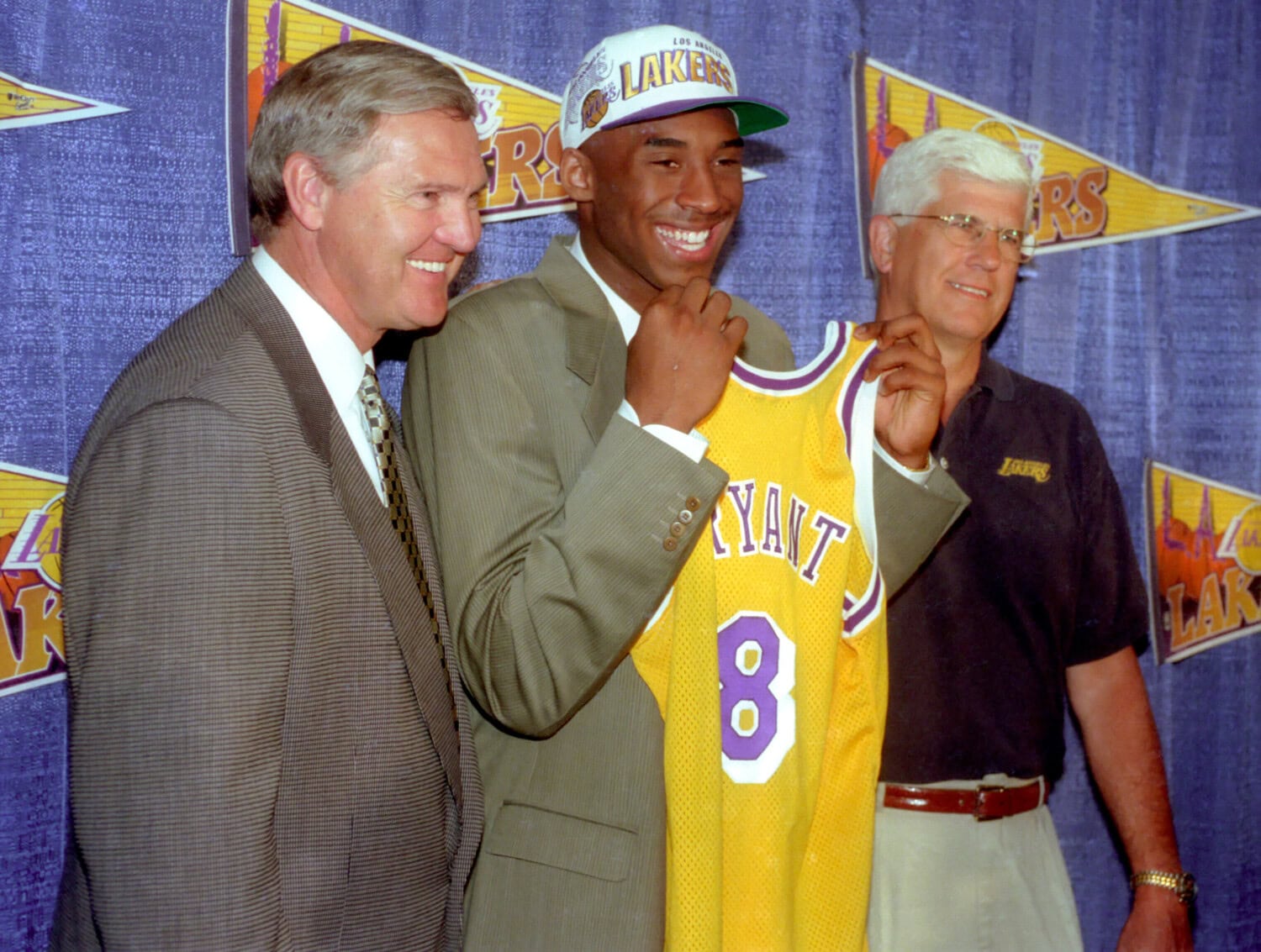
Years after taking a chance on a teenager, the Los Angeles Lakers are worth $6.4 billion, hanging both of Bryant’s retired jersey numbers in the rafters at Crypto Arena.
On the footwear front, Nike is valued at over $166 billion while Adidas is worth over $14 billion. As for the Kobe, Inc. empire, the dividends prove massive even if only the tip of the iceberg was touched.
In 2021, BodyArmor’s acquisition by Coca-Cola resulted in a $400 million payout to the Bryant estate. It’s a $5.6 billion brand Kobe was integral in from an investing and marketing standpoint.
“This brand would be maybe 25% of its size if it wasn’t for Kobe Bryant,” BodyArmor co-founder Mike Repole told Boardroom in 2022. “I can even say without the credibility and push he gave us in the early days, maybe [BodyArmor] doesn’t even make it.”
The same could be said of Hyperice. Once an art project never meant to be more, the recovery company is currently valued at $700 million.
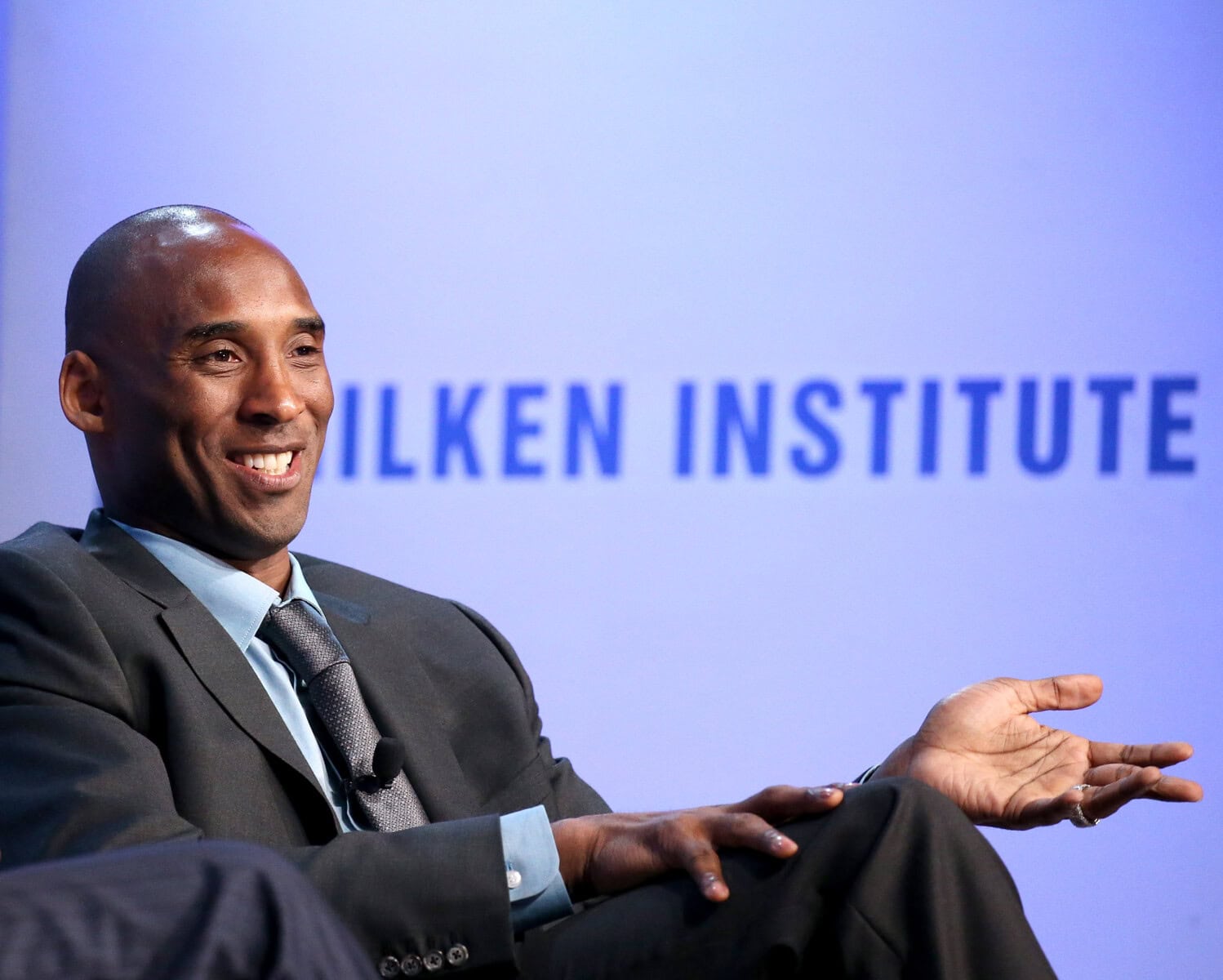
In his absence, the world remains inspired by the scholar student-athlete who bet on his talent and defined convention.
A late-blooming ball player who was never meant to attend ABCD Camp. An athlete with immense confidence and curiosity that took him straight to the league, paving a path for play and pay for future Hall of Famers to follow.
Always an innovator, the world remains grateful for all Kobe Bryant gave to the game and all that he built in business, never looking behind but always solving for what was next.